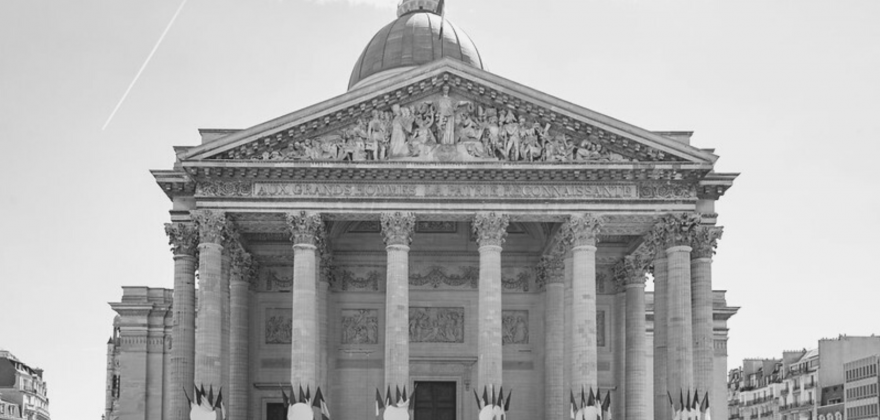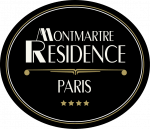
Latin Quarter of Paris: Discover the best tourist activities for an unforgettable stay
The Latin Quarter is an emblematic area of Paris, known for its charm, history and especially its lively student life. With its cobblestone streets and historic buildings, the Latin Quarter offers a unique experience for travelers who want to discover the richness of our culture. This article lists all the must-see tourist activities in the Latin Quarter, from visiting historical monuments such as the Lutetian Arena, to discovering museums, bookstores, and iconic gardens. Whether you are a traveler with a passion for history, literature or nature, the Latin Quarter promises you an unforgettable visit during your stay in the capital !
The must-see : What to do during your stay in the Latin Quarter ?
The Latin Quarter is full of fascinating historical sites. If you are lucky enough to be in Paris, be sure to check out the must-see sites in the Latin Quarter.
- The universities that built the reputation of the district
The Latin Quarter has been known as an intellectual and educational center for centuries. It is home to several prestigious universities renowned for their academic excellence and rich history, the most famous being the Sorbonne. It is one of the oldest universities in Europe. No university architecture in France is as famous or as emblematic as that of the Sorbonne University.

Its academic palace is composed of prestigious salons, galleries and amphitheaters housing works of art from the 17th and 19th centuries, classified as some of the finest in French heritage (painting, sculpture and decorative arts). No unaccompanied visits are allowed within the establishment. All guided tours of the Academic Palace must be accompanied by a guide. We invite you to look at the next available visits (with reservation) here.
CONDITIONS DE LICENCE FLICKR – PHOTO ©Pierre Metivier
- The Pantheon, monumental symbol of the Republic
Overlooking Paris, the Pantheon was originally built as a church dedicated to Saint Genevieve, the patron saint of Paris. However, since the French Revolution, the building, in neoclassical style, has been converted into a secular mausoleum that houses and honors the remains of famous people who have marked the history of France.
Identifiable already from the Place Sainte-Geneviève thanks to its impressive architecture, the Pantheon dominates Paris ! The monument is composed of a huge facade with a portico with columns and a big dome in its center. The interior is just as impressive... The building is grandiose and bright, with high vaults and massive columns supporting the dome.

Admire the frescoes and paintings on the walls that celebrate the glory of France and the various works of the personalities buried in the monument. Among the personalities buried in the Pantheon are Voltaire, Rousseau, Victor Hugo, Émile Zola, Jean Moulin, Marie Curie, Alexandre Dumas, Louis Braille and many others... In short, entering the Pantheon is like stepping back in time where you will retrace a part of French history!
CONDITIONS DE LICENCE FLICKR – PHOTO ©xiquinhosilva
Discover the Roman history of the Latin Quarter
The Latin Quarter is a lively neighborhood whose roots go back to the time when Paris was still known as Lutetia. It was on the left side of the Seine that the Romans built a new city (the present Latin Quarter), following the typical plans of Roman cities of the time. Lutetia was at that time a small Roman city, covered with official buildings. Today, although the Latin Quarter has changed a lot since Roman times, this influence has left a lasting mark on Paris and is still celebrated in monuments such as :
- The Antique Thermes of the Cluny museum
The remains of the Roman era can be seen in the Cluny museum where the ancient Roman thermes are located. Built around the 1st and 2nd century, the ancient baths were public baths that extended over 6000 m2, between the Montagne Sainte-Geneviève and the current boulevards Saint-Michel and Saint-Germain. Today, all that remains is a vaulted room : the frigidarium, the cold baths room. The Gallo-Roman baths of the Cluny museum are among the most exceptional ancient vestiges of northern Europe. These baths highlight the ingenuity, know-how and technical prowess of Roman architecture of the time.

CONDITIONS DE LICENCE FLICKR – PHOTO ©JR P
- The Lutetia Arena
The Lutetia Arena is also a fascinating testimony to the Roman history of Paris. This Gallo-Roman amphitheater could accommodate up to 17,000 people. In addition to gladiatorial combat and animal hunts, the amphitheater was also used for theatrical performances and other public ceremonies. Today, the Lutetia Arena is open to the public and can be visited for free. Visitors can explore the stands, the underground corridors and the arena where the shows were held. It is an excellent spot to have lunch in the open air or to rest for a few moments after a day full of discoveries in the Latin Quarter !
Explore culture and literature : The best bookstores in the Latin Quarter
As stated earlier, the Latin Quarter is known as an important intellectual and cultural center, and it is naturally that its bookstores are an integral part of its history as well as its culture and constitute a must-see destination for all lovers of literature. Indeed, during the Renaissance, the district was an important place for publishing and the spreading of new ideas. Numerous bookstores were opened and frequented by famous intellectuals and writers. Among the many bookstores in the neighborhood, we can mention two emblematic ones :

- Librairie Shakespeare & Company
This iconic bookstore became a meeting place for expatriate writers of the interwar years, such as Ernest Hemingway and James Joyce. Today, the bookstore continues to offer a selection of books in English, as well as literary events and readings.
CONDITIONS DE LICENCE FLICKR – PHOTO ©ActuaLitté
- La librairie La Hune
This bookstore offers books on art, photography and design. It has been frequented by famous people such as Jean-Paul Sartre and Pablo Picasso.
Two jewels of nature in the heart of the Latin Quarter
Despite the hustle and bustle of city life, the Latin Quarter is a place where you can also find oasis of calm and greenery. Discover two must-see places for an immersion in nature in the heart of Paris!
- Luxembourg Garden
A must-see and romantic place, the Luxembourg Garden is very popular with tourists and Parisian walkers. Famous for its alleys lined with trees, its flowerbeds, its vast lawns, its fountains, its sculptures and its basins, the Luxembourg Garden is also home to several historical buildings, including the Palais du Luxembourg. Throughout the year, the park is also the scene of cultural events such as art exhibitions and outdoor concerts.

CONDITIONS DE LICENCE FLICKR – PHOTO ©Rafael Lopez
- Jardin des Plantes
Classified as a historical monument, the Jardin des Plantes is one of the oldest botanical gardens in the world, home to a wide variety of plants, trees and flowers. Stroll through the alleys on free or guided tours.

CONDITIONS DE LICENCE FLICKR – PHOTO ©Sandrine Magrin
From prehistory to today : The National Museum of Natural History
Visit the National Museum of Natural History to learn more about the fascinating natural history of the world around us !
- National Museum of Natural History
The National Museum of Natural History in Paris is a collection of museums, gardens and galleries. You will discover 23 hectares dedicated to research and discovery of the riches of our planet spread out in the Ile-de-France. With the Jardin des Plantes, the heart of the Museum has 3 other main spaces :
- The menagerie : One of the oldest zoos in the world. It houses more than 1000 animal species, including endangered species (bears, wildcats, reptiles and many others)

- The Great Gallery of Evolution : Houses thousands of animal specimens, including mammals, birds, reptiles and insects, presented in a spectacular and immersive setting.
- The Great Greenhouses : The great greenhouses honor the incredible flora of our planet. The Jardin des Plantes has four large greenhouses, each housing plant species from different ecosystems : tropical forests, deserts and arid environments, New Caledonia, and the history of plant evolution.
CONDITIONS DE LICENCE FLICKR – PHOTO ©Brian Henderson
The Latin Quarter, an immersion in the Arab culture
The Latin Quarter is a place of cultural convergence where you can discover influences from all over the world. If you are curious about Arab culture, the Latin Quarter is a great place to immerse yourself in Arab and Islamic culture.
-
Arab World Institute (Institut du Monde Arabe)

The IMA was founded by France and the Arab League States to promote and spread Arab culture in all its forms ! The permanent exhibitions present the culture and history of Arab countries, as well as contemporary artists. They cover themes such as Islamic art, architecture, calligraphy, photography, music, cinema and literature. The library of the institute is one of the most important in France dedicated to the Arab world. During the year, the IMA is also the setting for numerous cultural events, such as concerts, dance performances, conferences, film screenings, etc. It is an ideal place to discover the richness and diversity of Arab culture and to learn more about this region of the world.
CONDITIONS DE LICENCE FLICKR – PHOTO ©Jean-David & Anne-Laure
- The Grande Mosque of Paris

Built in 1926 to honor the Muslim soldiers who fought for France during the First World War, the Mosque of Paris is one of the largest in France and is inspired by Hispano-Moorish architecture. It is composed of an interior courtyard, a garden, a prayer room, a library and a Koranic school. It is also a place of relaxation with its hammam, its restaurant, its tea room and its store. In short, the Mosque of Paris is a place of cult and a symbol of the Muslim presence in France. It is open to the public and welcomes visitors of all cultures and religions.
CONDITIONS DE LICENCE FLICKR – PHOTO ©Eric Parker
By exploring the lively streets of the Latin Quarter, you will discover a fascinating mix of Paris' history, culture and modern life. We hope this article has given you some great ideas for planning your next trip to Paris !
